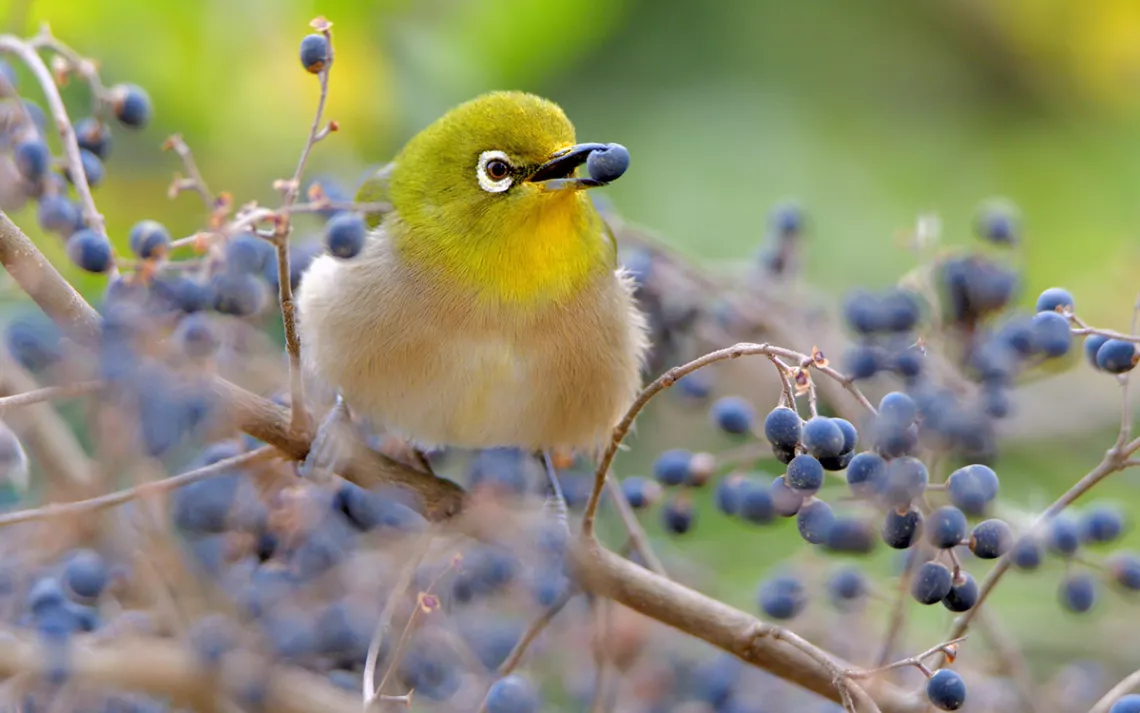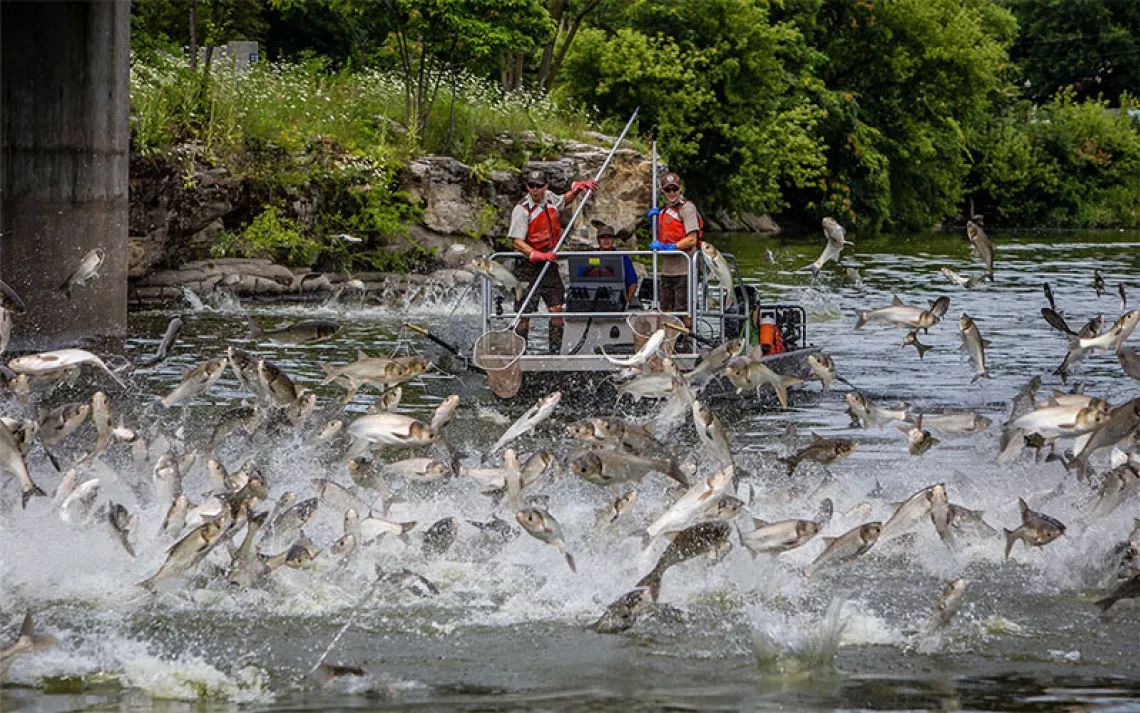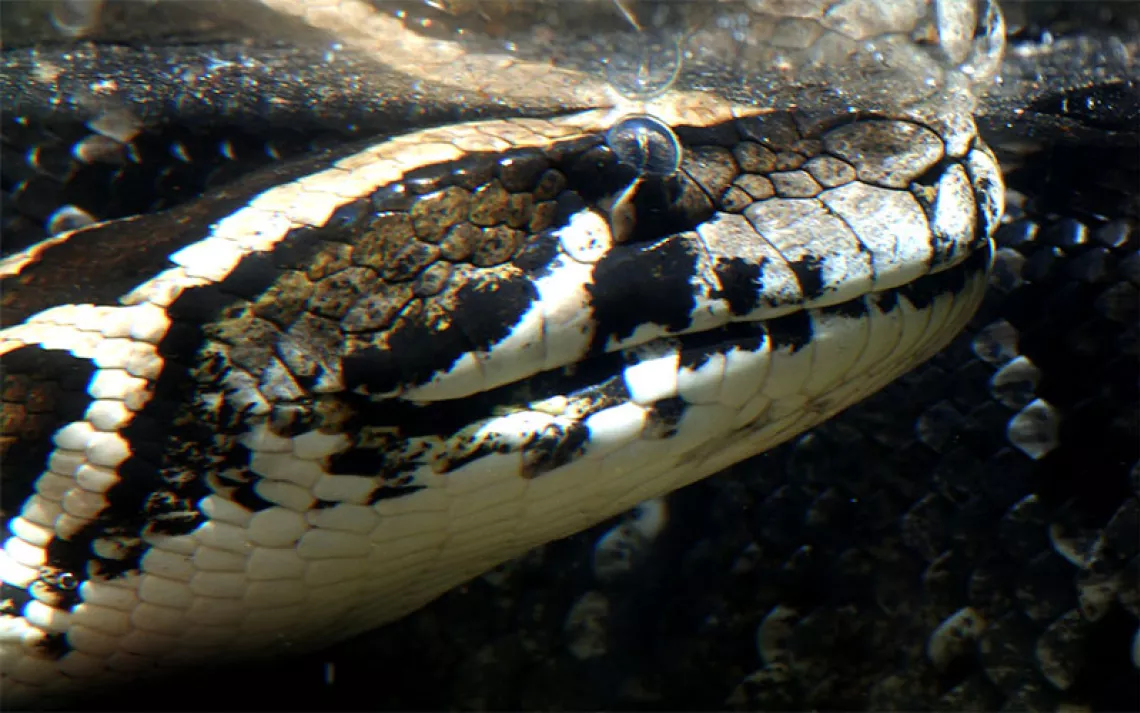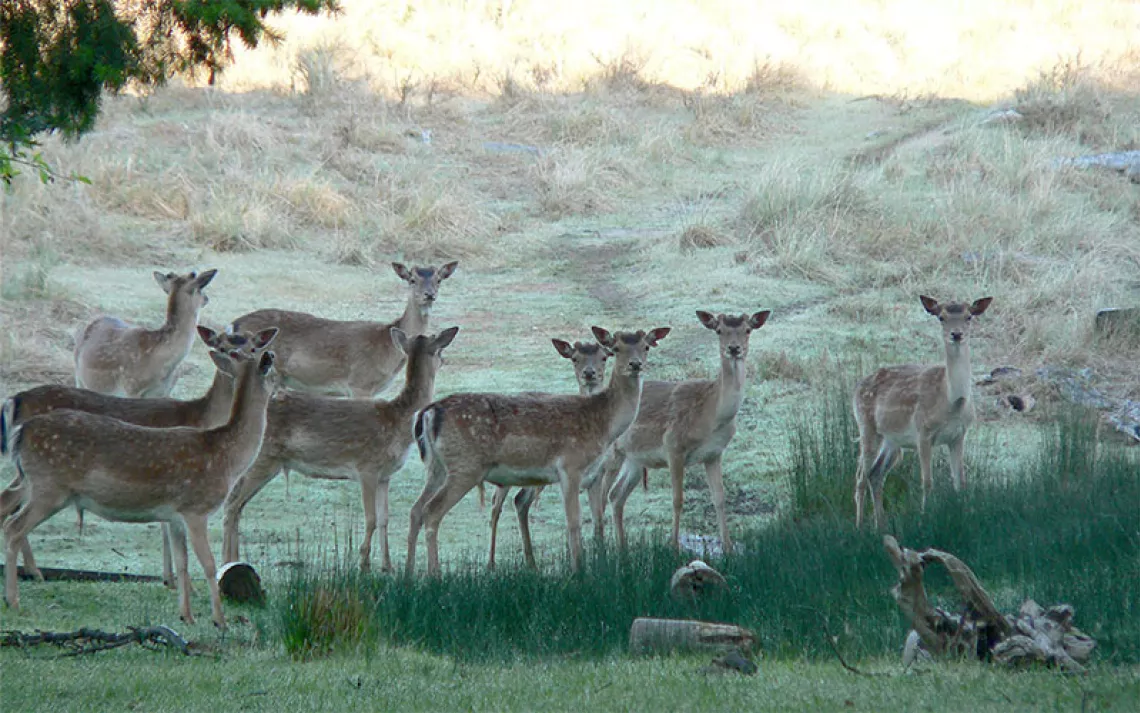Invasive Species Aren’t Always the Bad Guys
For some plants struggling to keep up with climate change, invasive species may be the lifeline they need

Photo by magicflute002/iStock
Climate change is forcing wildlife to search for new, more hospitable landscapes. While birds and mammals can use their legs, wings, and flippers to make that migration, plants need a little help. More than half of plant species rely on animals to disperse their seeds, usually by eating them and pooping them out, but many of those animal species are falling in numbers and/or being replaced by invasive species. A new study in the journal Science found that the disappearance of native seed dispersers has already led to a 60 percent decline in the ability of plants to keep up with climate change. If native dispersers continue to go extinct, we’re on track for an additional 15 percent decline.
Invasive species often get a bad rap—in many cases, for good reason. Bullfrogs infected with deadly chytrid fungus, for example, have caused the extinction of up to 100 other amphibians. Burmese pythons released into the Everglades decimate native wildlife, from bobcats to opossums. Invasive species have a particularly catastrophic impact on island ecosystems, where cats and pigs prey on native animals and plants.
But in some places, the Science study found, new species may play a crucial role in dispersing plants and helping them adapt to climate change. Eradicating invasive species would hurt, not help, many native plant populations, especially in island ecosystems hit hard by extinction. The results suggest that it’s time to rethink the role of introduced species in future conservation efforts.
An international team of scientists, led by ecologist Evan Fricke of Rice University, trained a machine learning algorithm to predict how far dispersers carry seeds based on specific characteristics, like their size and the food they eat and physiological characteristics like beak size. Then they compared how far these seeds would migrate each year, relative to the rate of climate change, in two scenarios: one that models a world in which no native dispersers have gone extinct and another representing today’s world. The difference between the two models was stark. “It would be ecologically significant if they found a 20 percent decline,” said Don Drake, an ecologist at the University of Hawaii at Manōa, who was not involved in the study. “Sixty percent is a lot.”
Yet another model in the study predicted plants’ ability to migrate to more hospitable climates in a global-warming scenario with no invasive species. While conservation efforts often emphasize removal of these species, this model didn’t find that to be a universally positive outcome. Instead, it suggested that plant communities on islands around the world and in some coastal regions would lose upwards of 85 percent of their ability to keep up with climate change if invasive species were to disappear.
“We shouldn’t discount the ecological functions that introduced species can play,” Fricke said. In Oahu, for example, researchers found that more than 99 percent of seed dispersals are facilitated by non-native animal species. With most native dispersers gone, “it’s kind of the best option for plants to be dispersed by these introduced species,” Fricke added.
It appears that invasive dispersers aren’t half bad at their job. For a study in Conservation Biology, biologists collected years of data on seed dispersal on Maui where a forest dominated by native plants collided with a forest dominated by introduced plants. The researchers found that 85 percent of the seeds dispersed came from native plants—and many of those seeds landed in the non-native forest. By the end of the study, some native plant species had become as common in the “invasive” forest as they had in the intact native forest. However, ecologist Jeferson Bugoni of the Federal University of Pelotas in Brazil cautions that while this ideal scenario is possible, it isn’t typical. One major pitfall of invasive seed dispersers is that they tend to prefer to eat invasive plants. Introduced animals “are a double-edged sword,” said Bugoni, who was not involved in the study. “On one hand, they are the only hope these plants have. On the other hand, they are making the system stay in this loop. You have introduced birds eating introduced plants, and then the plants get more abundant, and the cycle goes on and on.”

Sign up to receive Sierra News & Views
Get articles like this one sent directly to your inbox weekly.
With this action you affirm you want to receive Sierra Club communications and may vote on policy designated by the Sierra Club Board.
There is a happy medium between letting this feedback loop go unchecked and completely getting rid of introduced animals, Drake said. By removing invasive plant species, we might force animals to switch to a diet primarily made up of native plants, resulting in a different feedback loop, one that’s more favorable for native plant communities, he suggested. Scientists have also tried scooping out the seeds of tasty non-native fruits like papaya and spiking them with the seeds of native plants, like a parent sneaking veggies into a milkshake. Conservationists could also throw more non-native animals into the mix through rewilding efforts that introduce species analogous to those long extinct, Bugoni added. For example, conservationists are considering introducing Alalā (Hawaiian crows) to Oahu, where a species of crow native to that island long ago went extinct. However, Bugoni adds that such an effort requires concerted research beforehand to make sure that the introduced animal doesn’t wreak even more havoc on its new ecosystem.
Of course, the ideal conservation scenario is to prevent native dispersers from going extinct in the first place. In many mainland ecosystems, that’s still possible, Bugoni said. However, for islands like Oahu, where Bugoni has conducted much of his research, it’s already too late—and he worries the rest of the world is on the same trajectory. “Oahu is a crystal ball to predict the future. This is what the planet will become if we have extinction rates similar to Oahu's,” he said.
But in those places where it’s too late to turn back the clock, it might be time to embrace non-native species. “Until recently, everyone looked at native and non-native species as the good guys and the bad guys. Many people in the conservation community are growing to accept the fact that what we’re going to live with in the future is a mix of native and non-native species,” Drake said. “And yeah, if seed dispersal is going to take place, it's going to involve non-native species.”
 The Magazine of The Sierra Club
The Magazine of The Sierra Club



